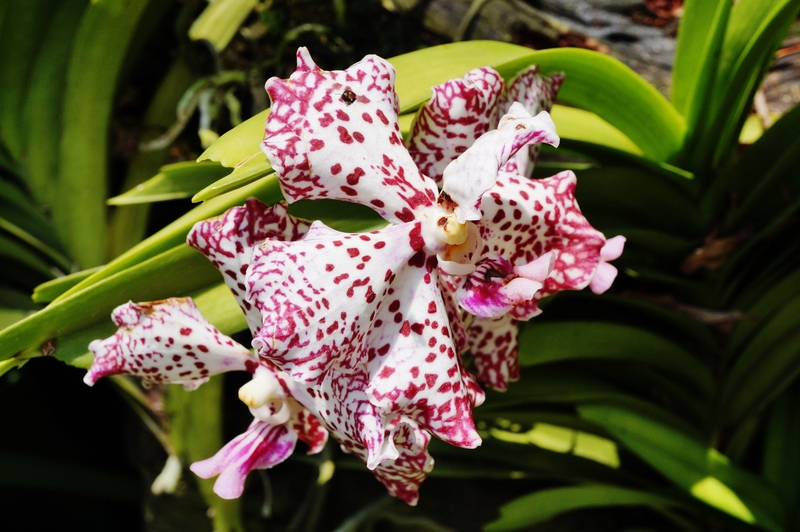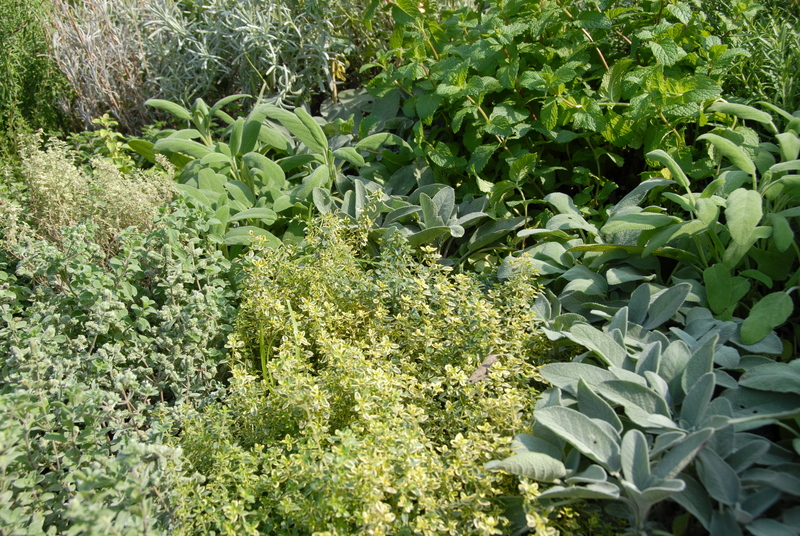Master the Art of Winter-Proofing Your Garden Plants
Posted on 01/09/2025
Master the Art of Winter-Proofing Your Garden Plants
Winter can be a challenging season for gardens, but with the right strategies, your plants can survive and thrive despite harsh weather. Whether you're an experienced gardener or just starting out, winter-proofing your garden plants safeguards your investments and ensures a lush, vibrant landscape come spring. In this comprehensive guide, you'll discover proven techniques and expert tips to help you master the art of protecting your plants in winter--from understanding cold weather threats to choosing the best materials for insulation and care.
Why Winter Protection Matters for Your Garden Plants
Cold snaps, frosts, snow, and icy winds can wreak havoc on a garden unprepared for winter's elements. Proper winter-proofing boosts plant health, reduces fatalities, and can even enhance growth in the next growing season. Here's why you should prioritize shielding your plants:
- Prevents frost damage to tender and evergreen plants
- Reduces stress from freezing and thawing cycles
- Retains soil moisture and nutrients
- Protects roots and stems from harsh winds and temperature extremes
- Discourages pests and diseases that capitalize on weakened plants
Understanding Your Local Winter Climate
Effective winterizing starts with a clear assessment of your location's typical weather patterns:
- Hardiness zones: Learn your USDA Plant Hardiness Zone to select suitable protection methods.
- Microclimates: Observe areas in your garden that get more wind, accumulate snow, or warm faster in spring.
- Typical threats: Identify if heavy snow, frost, ice, or unpredictable thaws are the biggest dangers in your region.
Essential Steps to Winter-Proof Your Garden Plants
1. Assess and Prepare Your Plants
- Remove dead growth: Prune diseased or damaged branches to prevent disease spread during damp conditions.
- Evaluate plant hardiness: Identify tender species and prioritize them for extra winter protection.
- Transplant vulnerable plants: Consider potting up small, moveable plants to shelter them indoors or in greenhouses.
2. Clean Up the Garden
A tidy garden is easier to safeguard. Remove fallen leaves and debris which could harbor pests or allow fungal diseases to overwinter. Clean tools and containers to minimize disease risks before storing them away.
3. Mulch for Maximum Protection
Mulching is the most effective way to winter-proof plants by insulating roots and moderating soil temperature. Here's how to maximize benefits:
- Apply a 2-4 inch layer of organic mulch such as shredded bark, straw, or leaf mold around the base of perennials and shrubs.
- Keep mulch a couple of inches from trunks and stems to prevent rot.
- For tender bulbs, increase mulch thickness to 6 inches and cover with evergreen boughs.
4. Water Wisely Before the Ground Freezes
Moisture protects plant cells from freezing. Thoroughly water your plants in late fall (while the ground is still unfrozen) to help them endure winter stress. Avoid water-logging, as saturated soil can foster rot or suffocate roots.
5. Shield Plants from Wind and Frost
Winter winds and rapid temperature drops are the main culprits behind desiccation and frostbite. Techniques to winter-proof your plants include:
- Windbreaks: Install burlap screens, snow fencing, or evergreen hedges as barriers.
- Frost cloths and covers: Use breathable horticultural fleece or old bedsheets on frosty nights.
- Cloche & cold frames: Protect young, delicate, or potted plants with temporary enclosures.
6. Wrap and Insulate Vulnerable Plants
For shrubs, young trees, and roses:
- Wrap trunks with tree wrap or horticultural burlap to prevent sunscald and frost cracks.
- Pile mulch or straw around the graft or crown of grafted roses and tender perennials.
- Encase top-growth in wire cages filled with leaves or straw for added insulation.
7. Protect Container Plants from Cold Damage
Plants in pots or containers are especially vulnerable, as soil temperature fluctuates more dramatically.
- Move pots against south-facing walls, under eaves, or into sheltered areas.
- Wrap containers in bubble wrap, burlap, or old blankets for insulation.
- Elevate pots on bricks to prevent waterlogging and reduce risk of pot cracking.
- For extreme climates, overwinter potted plants in a garage or unheated greenhouse.
8. Prune with Caution
Avoid excessive pruning late in the year. Cutting back triggers new growth that is too tender to withstand cold. Instead, wait until spring for major shaping and only trim dead or diseased wood in late fall.
Special Winter Protection for Common Garden Plants
Evergreens and Broadleaf Shrubs
- Water well before ground freezes: Prevents winter-burn from wind and sun.
- Shield from harsh winds: Erect windbreaks for hollies, boxwoods, and rhododendrons.
- Spray with anti-desiccant: Apply products like Wilt-Pruf on dry, above-freezing days to conserve moisture in leaves.
Roses
- Hill up mulch: Mound soil or compost 8-12 inches over the crown after first hard freeze.
- Protect from canker: Cover with burlap or rose cones where temperatures are extreme.
Perennials
- Cut back dead stems: For tidy beds, but leave some stalks for beneficial insects and added insulation.
- Mulch deeply: Especially for tender varieties or those marginally hardy in your zone.
Young Trees
- Wrap trunks: Tree wrap or plastic spirals guard against sunscald and rodent damage.
- Stake new trees: Support against winter winds that could uproot shallow-rooted saplings.
Common Winter Threats and How to Tackle Them
Snow Load and Breakage
- Brush off snow: Gently shake branches to prevent breakage on evergreens and shrubs.
- Avoid salt damage: Shield plantings bordering walkways or driveways to prevent de-icing salt from harming roots and foliage.
Ice Storms
- Let ice melt naturally: Don't attempt to knock or shake ice, as this can do more harm than good.
- Prune storm-damaged limbs in spring: Remove broken branches before new growth emerges.
Rodent and Wildlife Damage
- Install hardware cloth collars: Wrap around trunks to prevent gnawing from mice, voles, and rabbits.
- Clear mulch at base: Prevents rodents from nesting near trunks.
Advanced Tips for Expert Winter-Proofing
- Soil Testing: Amend soil with organic matter in the fall to improve drainage and fertility for stronger plants.
- Consider winter covers: Use row covers or cold frames for overwintering cool-season crops like kale, spinach, and carrots.
- Choose hardy varieties: Grow plants bred for your climate to minimize the need for elaborate protection.
- Monitor throughout winter: Check periodically for heaving soil, pest activity, or signs of water stress on mild days.
Debunking Common Winter-Proofing Myths
- More mulch is always better: Excessive mulch can suffocate roots and foster disease; aim for 2-4 inches.
- All plants need to be covered: Many established hardy plants survive winter without covers. Focus resources on tender and young plants.
- Snow is bad for gardens: A layer of snow actually insulates and protects plants from wind and sharp temperature swings.
- Watering is unnecessary in winter: Roots can dry out even in cold weather without sufficient moisture in fall.
Your Winter-Proofing Calendar
Plan your winter-preparation tasks for maximum effectiveness:
- Early Fall: Plant spring bulbs, divide perennials, and amend soil.
- Mid Fall: Apply mulch, bring in tender container plants, and reduce watering.
- Late Fall: Prune dead growth, wrap trees, and finish mulching after first frost.
- Early Winter: Set up windbreaks and stash materials for emergency protection.
- During Winter: Monitor weather, brush snow, and check for signs of animal damage.
Conclusion: Become a Winter-Proofing Master
By understanding your plants' needs and your local climate, you can confidently winter-proof your garden--protecting it from cold, wind, and surprise thaws. With advance preparation, proper mulching, strategic covers, and routine monitoring, your beloved garden is poised for health and abundance as soon as the thaw comes.
Start today and master the art of winter-proofing garden plants--your future self (and your flourishing garden) will thank you!
Frequently Asked Questions about Winter-Proofing Garden Plants
- What is the easiest way to protect new transplants from frost?
Use a cloche or frost cloth overnight and mulch well around the base. - Can I use plastic as winter cover?
Avoid direct contact with foil or plastic, as these trap moisture and can cause rot; burlap and fleece are better choices. - Should I fertilize in winter?
No, fertilize in spring or early fall; winter feeding spurs tender growth that can be killed by cold.
Further Reading and Resources
- The Old Farmer's Almanac: How to Winterize Your Garden
- University of Minnesota Extension: Protecting Plants in Winter
- Royal Horticultural Society: Protecting Your Garden in Winter
Keep your garden thriving--winter-proof your plants today!



